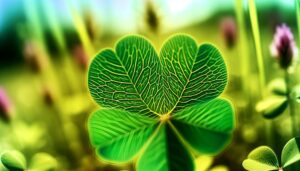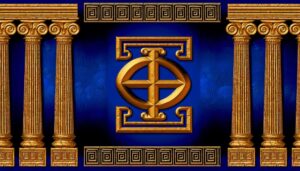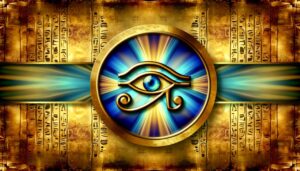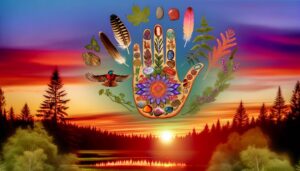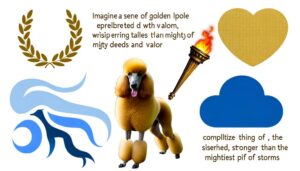Decoding the Symbols in Lords of Salem – A Guide to Meaning
The symbols in *Lords of Salem* draw heavily from historical and occult traditions, creating a rich tapestry of meaning. The film's use of pentagrams, archaic texts, and juxtaposed religious and occult imagery critiques the misuse of religious ideology and evokes the legacy of the Salem witch trials.
Occult influences are evident through references to ancient texts like the Necronomicon, and esoteric motifs such as alchemical symbols and numerology. Visual elements, including color symbolism and witchcraft paraphernalia, deepen the narrative atmosphere.
These symbols not only enhance the story's dark tone but invite viewers to explore nuanced interpretations and underlying societal critiques.
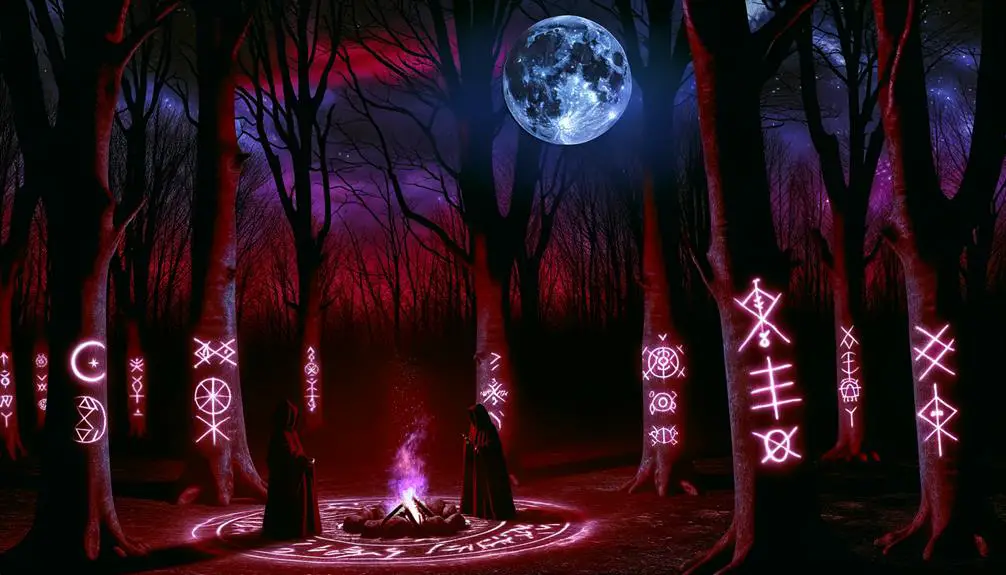
Key Takeaways
- The pentagram in 'Lords of Salem' symbolizes protection and supernatural forces, central to the film's occult narrative.
- Color symbolism, such as black for malevolence and red for violence, deepens the film's atmospheric tension.
- Historical witchcraft imagery, like coven assemblies and grimoires, evokes cultural connotations and enriches the storyline.
- The use of archaic texts and runes enhances the film's dark, esoteric ambiance.
- Goat imagery represents the balance between good and evil, reflecting the film's exploration of occult themes.
Historical Context of Symbols
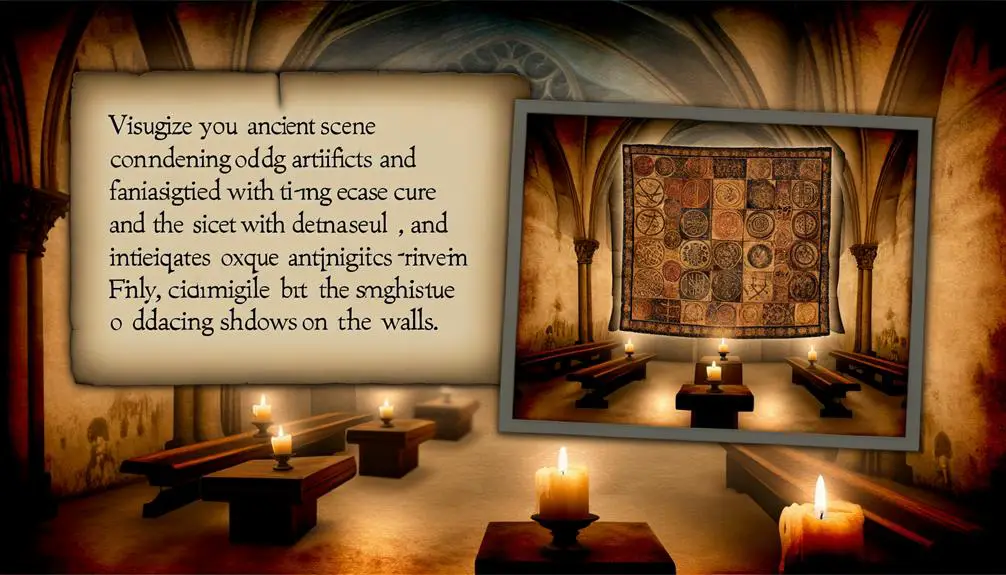
The historical context of symbols in 'Lords of Salem' reveals a complex interplay of cultural, religious, and societal influences that have evolved over centuries. These symbols are deeply rooted in the Puritanical fear of witchcraft, reflecting the period's obsession with the supernatural and the demonic.
The film taps into the Salem witch trials' legacy, where hysteria and religious fervor led to persecution. It incorporates esoteric and occult imagery, drawing from European witchcraft traditions and medieval demonology. This amalgamation of symbols not only serves to enhance the narrative's dark atmosphere but also critiques the historical misuse of religious ideology to control and oppress.
Understanding these symbols requires a nuanced appreciation of their multifaceted historical origins and implications.
Primary Symbol Breakdown
Delving into the primary symbols within 'Lords of Salem' reveals a rich tapestry of iconography, each element meticulously chosen to deepen the film's thematic resonance and underscore its critique of historical and contemporary anxieties surrounding witchcraft.
Central to this is the recurring imagery of the pentagram, an emblem often misinterpreted yet pivotal in exploring themes of power and protection versus malevolence.
The use of archaic texts and runes further embeds the narrative in a historical context, serving as conduits of ancient knowledge and fear.
Additionally, the juxtaposition of religious iconography with occult symbols creates a stark visual dichotomy, emphasizing the tension between orthodox beliefs and perceived heresies, thereby inviting viewers to question societal constructs of morality and the unknown.
Occult Influences
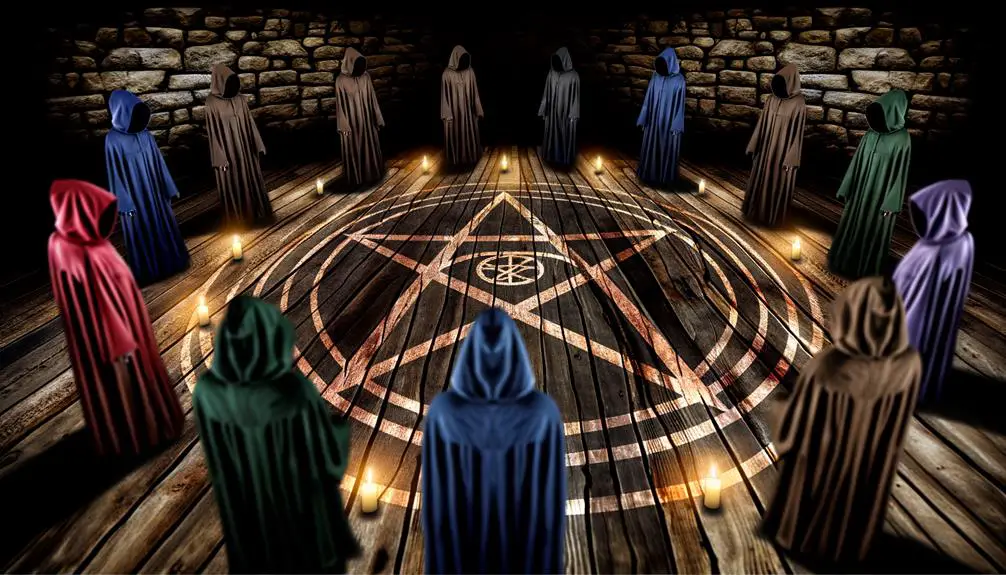
Exploring the occult influences in 'Lords of Salem' reveals a deliberate intertwining of esoteric traditions and mythologies that serve to amplify the film's eerie atmosphere and thematic depth.
The narrative leverages symbols and motifs from various occult systems, including alchemical imagery and numerological references, to construct a layered and unsettling experience.
The film meticulously incorporates elements such as the sigil of Baphomet and references to ancient texts like the Necronomicon, each serving to root the story within a broader context of historical occultism.
This deliberate use of arcane symbolism not only enriches the narrative but also engages the audience in a deeper intellectual exploration of the dark and mysterious underpinnings that drive the plot forward.
Witchcraft Imagery
Witchcraft imagery in 'Lords of Salem' is meticulously crafted to evoke historical and cultural connotations that enhance the film's menacing atmosphere. The director utilizes various elements that resonate with the audience's understanding of witchcraft, adding layers of depth to the narrative.
Key visual motifs include:
- Pentagrams: Symbolic of ancient rituals, these are used to signify dark, mystical practices.
- Grimoires: Ancient spellbooks enhance the authenticity and historical context of the witchcraft theme.
- Coven Assemblies: Depictions of witches gathering in secret emphasize the clandestine and sinister nature of their activities.
- Occult Symbols: Various esoteric symbols are strategically placed to create an aura of mystery and danger.
Such imagery is not just decor but integral to the thematic fabric of the film.
Symbol of Possession
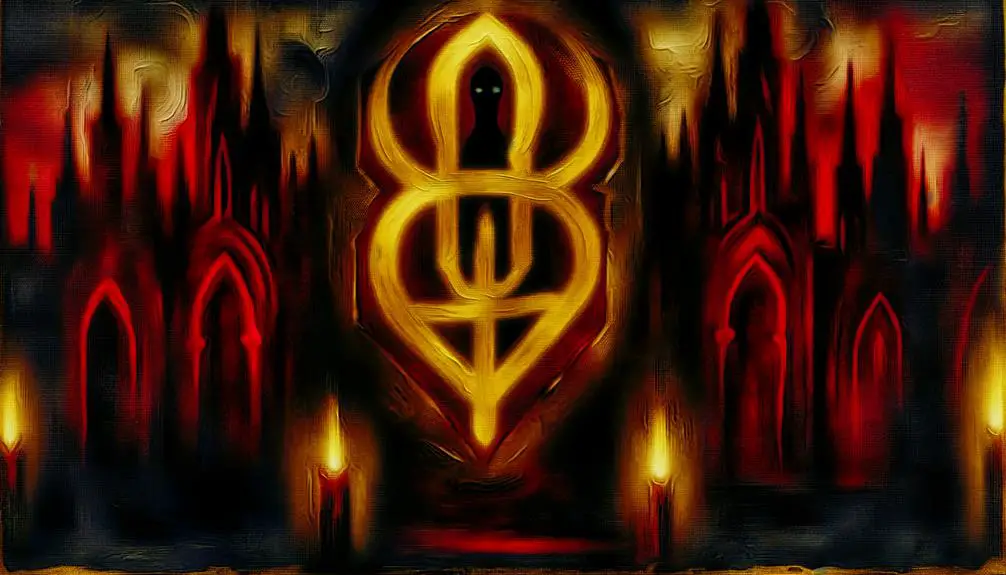
The Symbol of Possession within 'Lords of Salem' is intricately tied to historical practices of witchcraft, often serving as a visual conduit for malevolent control. This symbolism profoundly impacts the characters, as it manifests through their psychological and physical transformations, underpinning the narrative's tension.
Historical Symbolism Usage
Throughout history, symbols associated with possession have often been employed to convey the control and influence exerted by one entity over another, frequently manifesting in religious and occult contexts. These symbols serve as powerful tools to illustrate complex relationships of dominance and submission.
Key historical usages include:
- Pentagrams: Frequently used in rituals to summon and control supernatural entities.
- Sigils: Custom symbols representing demons or spirits, used in medieval grimoires to bind or command.
- The Evil Eye: An ancient symbol believed to protect against malevolent forces exerting control.
- Amulets and Talismans: Objects inscribed with symbols to ward off possessive spirits or to ensure protection.
These symbols not only encapsulate the essence of possession but also reflect societal fears and beliefs regarding unseen powers.
Influence on Characters
Examining the impact of possession symbols on characters within 'Lords of Salem' reveals the nuanced ways in which these historical emblems shape individual behaviors and narrative arcs. The symbols act as catalysts, exposing dormant fears and desires, and pushing characters toward psychological unraveling.
For instance, Heidi's exposure to the ancient sigil initiates her descent into madness, manifesting as hallucinations and erratic behavior. The possession symbol serves not only as a plot device but also as a mirror reflecting the characters' vulnerabilities. It underlines their susceptibility to manipulation by darker forces, thereby enriching the thematic complexity of the story.
This dynamic usage of symbols underscores the inherent power they wield over the human psyche, propelling the narrative toward its harrowing climax.
Symbolic Use of Animals
In 'Lords of Salem,' the symbolic use of animals serves as a critical tool for conveying underlying themes of transformation, power, and primal fear. The film utilizes specific animals to invoke deeper meanings:
- Rats: Often symbolize decay and disease, reflecting the moral and spiritual corruption within the narrative.
- Goats: Represent sacrificial elements, as well as connections to the occult and demonic forces.
- Crows: Symbolize death and foreboding, acting as harbingers of doom.
- Wolves: Embody primal instincts and the transformation from human to beast, highlighting internal and external conflicts.
These symbolic animals enrich the film's thematic complexity, allowing viewers to engage with the narrative on a more profound psychological level, enhancing the overall impact and atmosphere.
Ritualistic Elements
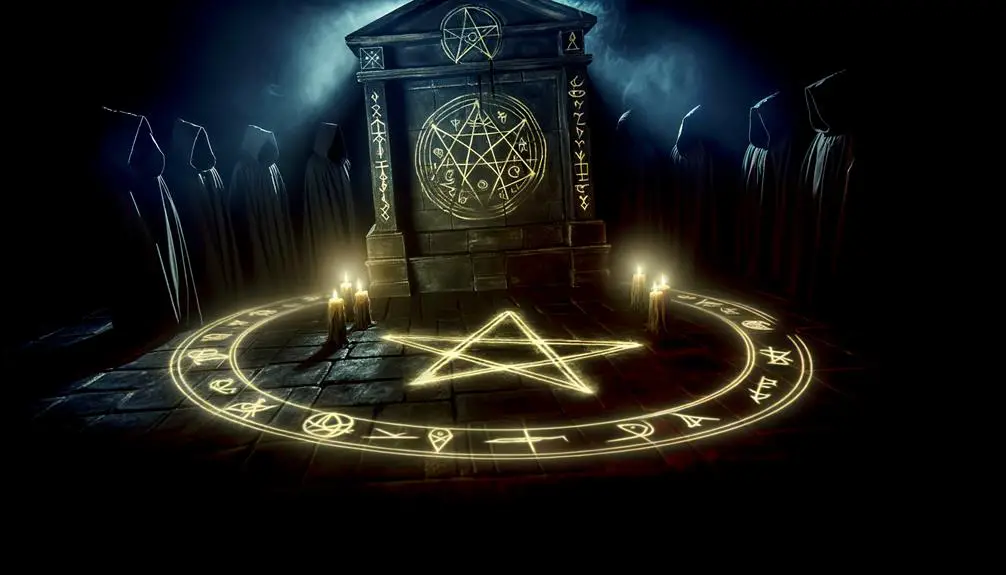
Ritualistic elements in 'Lords of Salem' serve as a pivotal framework for exploring themes of historical legacy, communal identity, and the manifestation of supernatural forces.
The film meticulously depicts rituals as a bridge connecting the past and present, reflecting the enduring influence of Salem's dark history on contemporary society. Ceremonial acts, such as chanting and symbolic offerings, underscore a collective identity steeped in mysticism and shared trauma.
These rituals are not mere plot devices but critical mechanisms that activate the supernatural, making the unseen tangible. By intricately weaving these elements into the narrative, 'Lords of Salem' critiques how rituals perpetuate cultural memory and elevate latent fears, thereby enriching the film's thematic depth and psychological impact.
Color Symbolism
Color symbolism in 'Lords of Salem' operates as a nuanced visual language that reinforces the film's thematic exploration of evil, history, and psychological disintegration. The deliberate use of color accentuates key narrative elements, creating an immersive and haunting atmosphere.
- Red: Symbolizes blood, sacrifice, and the omnipresent threat of violence.
- Black: Represents the unknown and the engulfing darkness of historical malevolence.
- White: Conveys a false sense of purity and control, contrasting with the underlying chaos.
- Yellow: Highlights madness and the gradual unraveling of the protagonist's mental state.
These colors are not merely aesthetic choices but serve to deepen the audience's understanding of the film's dark, multifaceted narrative. Analyzing these hues reveals layers of meaning that contribute to the film's unsettling impact.
Contemporary Interpretations
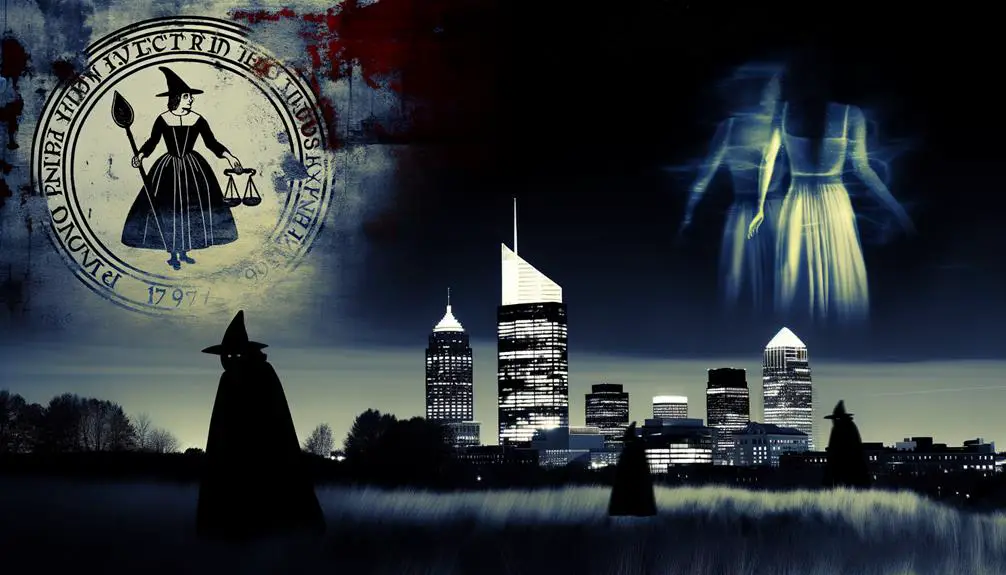
Contemporary interpretations of the symbols in 'Lords of Salem' can be analyzed through the lens of modern occult symbolism, which often intertwines with and is influenced by pop culture narratives.
This convergence is evident in the film's artistic representations, reflecting a nuanced dialogue between historical esotericism and current media trends.
Examining these elements provides insight into how traditional symbols are recontextualized in today's artistic and entertainment landscapes.
Modern Occult Symbolism
Modern occult symbolism in 'Lords of Salem' serves as a complex tapestry that intertwines historical references with contemporary interpretations, revealing deeper cultural and psychological significances. This film utilizes symbols to evoke a sense of dread and mystique, reflecting modern society's renewed fascination with the occult.
Key aspects include:
- Pentagrams: Often depicted in ritualistic settings, they symbolize protection, power, and the invocation of supernatural forces.
- Goat Imagery: Represents the Baphomet, an emblem of balance between good and evil, often misunderstood as purely malevolent.
- Witchcraft Paraphernalia: Items like cauldrons and grimoires highlight themes of hidden knowledge and forbidden practices.
- Musical Cues: The use of eerie, discordant sounds to invoke a supernatural ambiance, reinforcing the film's unsettling atmosphere.
These elements collectively enrich the film's narrative complexity.
Pop Culture Influences
In examining 'Lords of Salem,' it becomes evident that the film draws heavily from pop culture influences, particularly through its portrayal of witches, music, and horror tropes that resonate with contemporary audiences.
The depiction of witches aligns with modern reinterpretations seen in other media, reflecting both empowerment and malevolence.
Musically, the film taps into the legacy of 1970s rock, a genre deeply intertwined with rebellion and dark mystique.
Horror elements such as eerie atmospheres and psychological manipulation are influenced by classics like 'Rosemary's Baby' and 'The Shining.'
These choices are not merely stylistic but serve to anchor the film within a recognizable cultural framework, enhancing its thematic impact and audience engagement through familiarity and subversion.
Artistic Representations Today
Examining the film's influence on and reflection of contemporary artistic representations, it becomes clear that 'Lords of Salem' serves as a nexus where modern interpretations of the occult and horror intersect with visual and narrative innovation.
The film's symbols and aesthetic choices resonate in today's art, leading to several remarkable trends:
- Symbolic Imagery: Artists integrate occult symbols, inspired by the film, into multimedia works.
- Narrative Depth: Contemporary storytelling in art now frequently explores themes of historical persecution and supernatural vengeance.
- Visual Style: The film's distinct color palette and unsettling visuals are emulated in modern digital art and graphic design.
- Cultural Commentary: Current works use occult references to comment on societal issues, mirroring the film's subtext.
These elements collectively enhance the modern artistic landscape.
Conclusion
In summation, the symbols within 'Lords of Salem' serve as an intricate tapestry woven from historical, occult, and witchcraft elements. Each thread contributes to a chilling narrative of possession and ritual.
The vivid imagery of animals, the strategic use of colors, and the ritualistic motifs paint a haunting tableau that speaks to both ancient fears and contemporary interpretations.
These symbols collectively cast a long, eerie shadow, evoking a profound sense of unease and otherworldly dread.

